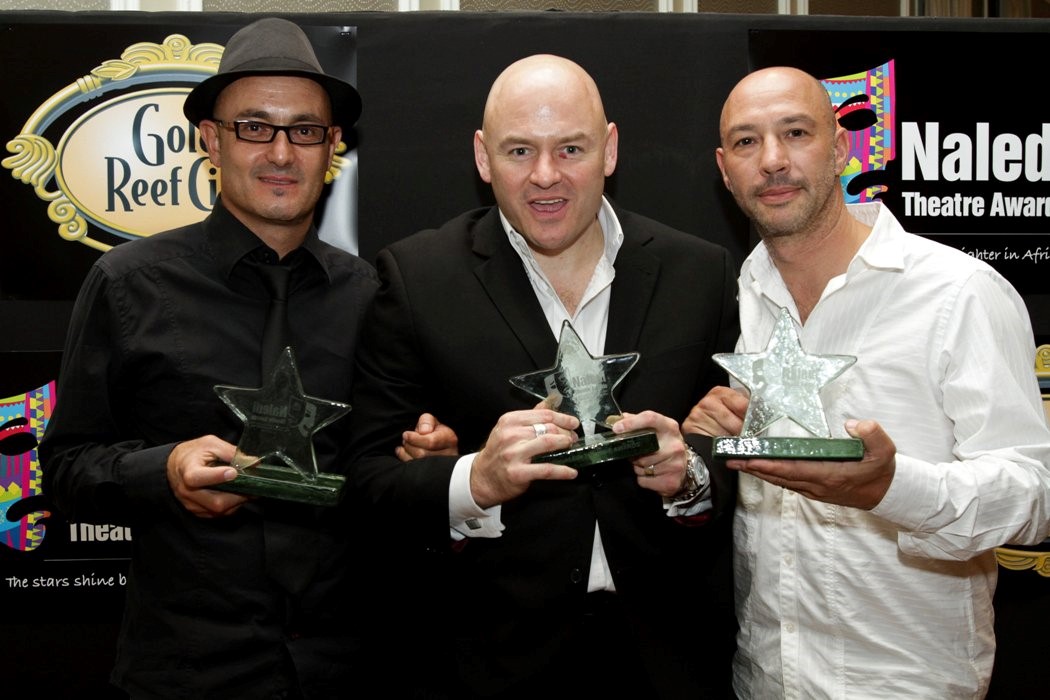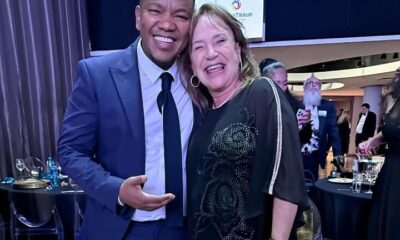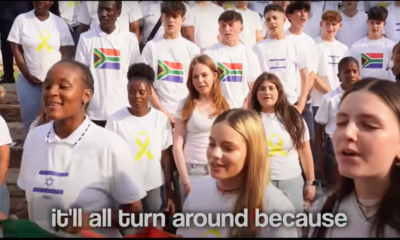
Lifestyle

Beautiful Creatures makes comeback for new generation
Many of our children grew up listening to Beautiful Creatures. Now, Gallo Records and Paul Choritz, Alan Glass, and Ed Jordan – the Beautiful Creatures team – are relaunching the catalogue of songs 20 years after its first release. We speak to Paul Choritz about it.
What inspired Beautiful Creatures when you first launched it?
Beautiful Creatures came about in the early 2000s. Alan Glass had young children, and wasn’t enjoying the music available for his children to listen to at that time. To him, it all sounded banal and simplistic. Ed Jordan and Alan knew each other from drama school at the University of the Witwatersrand, and met to discuss the idea of creating music that would be listened to by parents with their children, music that both parents and children could enjoy.
How did you make it happen?
Alan and Ed started writing songs. Once they had six songs, they booked a studio, session musicians, and singers, and recorded a demo. Alan knew that I was in the music industry, and arranged for the three of us to meet. He gave me the demo, and I loved what I heard. The three of us then set up our own record label. This was totally unique, as it was unknown for artists to have a stake in the record label that represented them. We completed the first album, and launched it.
Who wrote the songs, produced it, did the “taste tests”, and so on?
All the Beautiful Creatures songs were written by Alan and Ed. Initially, Alan wrote lyrics and Ed wrote music, but they soon started collaborating fully and both contributed to music and lyrics.
Production of the albums was a collaborative effort between Ed, Alan, and myself. Ed had extensive experience working on his own albums, and is a genius in the studio. We booked Neill Solomon studios, and over the years, we recorded all the albums there. Ed and Alan performed on the albums as well as a host of South African singing and acting talent, and a children’s choir made up of family and friend’s children including Alan’s daughter, Ruby, who was four years old when we recorded the first album.
What was the initial reaction to the songs, and what followed?
The initial reaction was exceptional, locally and abroad. When we released the first album, we literally couldn’t keep up with the demand. On the back of the positive response, I managed to get the CD into hundreds of retail stores. We were stocked in CD stores, book shops, baby stores, curio shops, and airport stores.
The albums earned gold and platinum certification.
We received thousands of emails from fans all over the world. Some of the best feedback included things like, “I dropped my kids at school, and carried on listening all the way to work.”
How did you respond to the popularity?
We kept writing more albums, and focused on developing the brand. We released seven CDs in total, published a range of books, and produced a stage show.
Why do you believe it resonated with kids and adults?
The fact that families could listen to the CDs together was a big attraction. Adults and kids resonated to the music’s local content and African sounds and rhythms. We also made a point of never talking down to our audience.
What’s unique about Beautiful Creatures?
Unlike a lot of other children’s music, we didn’t compromise on production values. We used phenomenal musicians and singers. We treated the production of the albums the same way one would an adult contemporary album. For each album, we spent a month in studio perfecting the product.
Has Beautiful Creatures had an impact on your life and that of Alan and Ed and the others involved? If so, how?
Beautiful Creatures impacted all our lives and many others for the better. Years after our first release, parents, and children – who are now adults with their own children – come up to us to say how the albums were part of their childhood and their family road trips. We also like to believe that in our own way, we contributed to education around issues like anti-poaching, conservation, anti-litter, and literacy. Our Beautiful Me album helped address social issues that kids often grapple with. We also like to believe that Beautiful Creatures forms part of our personal legacies.
Which were your most popular songs and animals, and why do you believe that was?
Imvubu the Happiest Hippo, Lucas the Lazy Lion, and Harry the Hungry Hadeda were the most popular. Imvubu had a trade mark happy hippo dance; Lucas was interactive; and Harry resonated with all South Africans who wake up to the unique sound of the Hadeda.
What does your daughter think about Beautiful Creatures? What does she love best?
Leeya used to be a big fan of Beautiful Creatures, and loved Bumpytail the Ragged Tooth Shark the most. The fact that the song is sung by Cito from Wonderboom, whom she is so fond of, might have influenced this. She’s now more into Eminem.
Until the relaunch, were people still buying the series of CDs?
We were selling a small number of tracks online, but no physical CDs.
Why did you relaunch it?
The catalogue was gathering dust, and required a fresh approach. I contacted a friend at Gallo Music to see if they were interested in partnering with us, and they were. We are fortunate to be partnering with Gallo, the largest and oldest independent record label in South Africa. Together with the team from Gallo, we’re giving Beautiful Creatures a new lease on life.
Are there any changes in the relaunched edition? If so, what are they?
All the artwork has been refreshed so that it aligns with the kids of today. We have also remastered all the tracks.
Is there a chance for a new CD? If so, how would it be different now?
In 2008, Ed and Alan wrote an album that we never recorded. Its working title was Beautiful Safari, and perhaps one day, we’ll release it. We would release it digitally, and would obviously not print up physical CDs.










